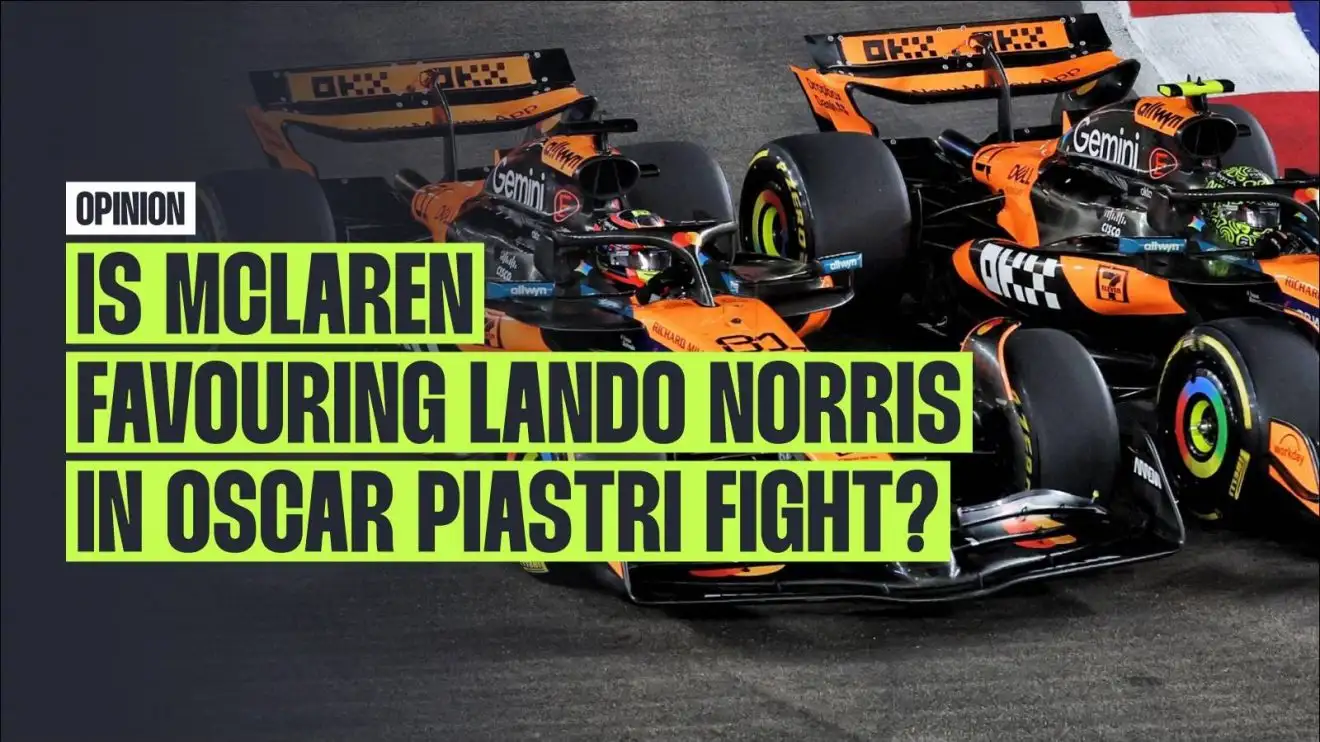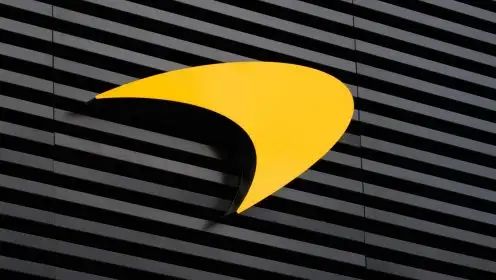Has McLaren really been playing favourites in Norris v Piastri title fight?

Has McLaren shown any bias towards Lando Norris in the F1 2025 championship fight?
McLaren’s handling of its two drivers making contact in Singapore has resulted in some accusations from fans that the team is favouring Lando Norris in his battle with Oscar Piastri. Does this accusation hold any water when held under a microscope?
Piastri continues to lead the Drivers’ Championship by 22 points over Norris with six race weekends to go, but should that gap have been much larger than it is?
Has McLaren favoured Lando Norris in Drivers’ Championship battle?
The outcry from Piastri fans that McLaren has favoured Norris through this year’s title fight has grown ever louder as the season has progressed. Social media is rife with such sentiment, with the logic being that Norris, by dint of being with the team through tougher days, has ‘earned’ the right to some individual glory before the relative newcomer in Piastri.
The furore after Singapore kicked off as a result of Norris’ aggression at the start in Singapore going unchecked by the team, despite the British driver making contact with Piastri after inadvertently clipping the back of Max Verstappen’s car.
Andrea Stella’s waving off of the contact as being due to the tap against Verstappen’s car does raise eyebrows, and, certainly, Piastri’s seemed to be as he radioed in to exclaim about the unfairness of the situation.
After Monza 2024, when Piastri overtook Norris on the first lap in a move that did cost the team overall points, Zak Brown revealed that, “Papaya rules are it’s your team mate; race him hard, race him clean, and don’t touch. Really, just respect your teammate.”
Looking back through incidents and strategy calls involving the two McLaren drivers this year, is there any substance to some fans’ perception that Norris is being favoured by the Woking-based squad?
- Australia: With Piastri hunting down Norris as the track dried, McLaren instructed the Australian to hold back just as Piastri was within touching distance of Norris’ DRS. This was ostensibly due to traffic and needing to negotiate cleanly through it during tricky conditions, a sensible call but of little help to Piastri. By the time they were clear, Piastri’s momentum had faded.
- Imola: Leading on track, Piastri is brought in early on Lap 14 for a two-stop strategy. Norris, running longer, goes to Lap 29 and, after Piastri pitted for a second time, pits under a Safety Car to bunch up behind Piastri on fresher tyres. Norris slices past to get past Piastri.
- Canada: With Norris having been open about not getting the feel for his car that he desired through the opening races, McLaren introduces a new suspension. A strong race from Norris sees him attacking Piastri in the closing stages, and he collides with the back of his teammate on the pit straight. Piastri was fortunate to finish the race, while he and McLaren accepted the apologies of a despondent Norris. A potentially explosive moment, but one that is handled sensibly by all due to Norris’ willingness to accept the blame and apologise.
- Austria: “Too marginal, you can’t do that again,” Piastri is told over team radio after he locks up while attacking Norris into Turn 4 on Lap 20. While there was no contact, Piastri acknowledged this afterwards as a ‘fair comment’.
- Great Britain: A calamitous time penalty is given to Piastri for excessive braking behind the Safety Car, which results in Verstappen going past him down the Hangar Straight. Losing the lead to Norris when he serves the penalty, Piastri pleads to have the positions swapped back as McLaren acknowledged the unfairness of it, but the request is denied.
“The way we managed the situation, given the penalty, was to allow Oscar, despite the penalty, in case of a Safety Car, to retain the lead because, if there was a Safety Car, both cars would have pitted, Oscar would have paid the penalty, Lando would have waited, and the two McLarens would have gone out in the same order as they came in,” Stella explained afterwards.
“But at the point in which we needed to have the transition of the dry tyres, then the penalty was paid, and at that stage, we thought that we should just retain the natural order through the penalty.
“I think this was fair for both, and I’m sure that Oscar will understand and agree in this way.”
- Belgium: The two McLarens dominate proceedings, with Piastri passing Norris in the tricky conditions on intermediates at the start. When the switch to dry tyres comes, Piastri is put on the medium tyre to get to the end, with Norris pitting shortly after for the hard tyre. Norris spends the race reeling Piastri in as the Australian manages degradation on the mediums, but falls short of overcoming his teammate.
Speaking afterwards, Stella revealed the pitwall had been erring towards medium tyres for both cars, as well as double-stacking, but Norris chose to deviate on strategy and plump for the hards; this was permitted as there was “no prescription” for the drivers on what to do.
- Hungary: Piastri outqualified Norris and embarked on a two-stop strategy, which Stella explained afterwards had been viewed as the “dominant” strategy, as his focus was on undercutting the leading Charles Leclerc. Norris, staying out longer, managed to keep his tyres alive long enough to change to a one-stop strategy, and this resulted in a role reversal from Spa as Piastri came back at him on quicker tyres, ultimately losing out.
“We bring the value of racing into Formula 1,” Stella said afterwards.
“So we want to give great racing for F1, we want to give our two drivers the possibility to utilise, express their talent, pursue their aspirations, their personal success and business to happen within the boundaries of the team interest and the fairness, the scholarship and the respect for one another.
“For me, this is what I see when we have a deviating strategy, when we have different options. I think this is part of racing. We want to make sure that none of the drivers are surprised, and I think none of the drivers were surprised. And so far, I can only be very grateful for the way Lando and Oscar had interpreted the way we are racing as a team, as a group, which includes the drivers, and I’m sure this is going to be the same until the end of this season.”
Unusually, Piastri does have to get on the radio to his engineer to tell him that he doesn’t “care about Leclerc” as he’s offered information about the Ferrari driver, saying that he “just wants the best chance to beat Lando”.
Upon his late attack on Norris, Piastri locks up and almost, but doesn’t collect, Norris, to which he’s quickly reminded to “remember how we go racing”.
- Monza: Plenty has been written about the late-race events at Monza, in which Norris clearly had the upper hand in pace over Piastri through the Grand Prix. However, McLaren opted to bring in Piastri for his pitstop first, despite being behind Norris on track, having asked the question of Norris as they sought to cover off Leclerc behind them. When Norris pitted a few minutes later, his slow stop resulted in Piastri getting ahead, with McLaren getting on the radio to ask Piastri to give up position to Norris. While he questioned this, pointing out that “I thought slow stops are part of racing”, he obeyed the order. It’s important to note that both drivers worked for the benefit of the team here: Norris in agreeing to allow Piastri to pit first, and Piastri for (reluctantly) giving up the place.
- Singapore: With Piastri put out by Norris’ aggression at the start, in a move that could have compromised both driver’s races, it is notable that Norris is not admonished over team radio for the contact, which does contrast with the warnings to Piastri in Austria and Hungary for lock-ups while in battle with his teammate. Unlike at Monza, Norris doesn’t permit the team to pit Piastri, behind him on track, first upon request. Despite having made contact with his teammate, which appears to be the most important facet of intra-team racing at McLaren, Norris seems to escape any public criticism from his bosses, with Zak Brown saying, “they race hard, they race clean, they race to win”.
What conclusions can be drawn from what we’ve seen in F1 2025?
What is clear is that McLaren’s ethos of “letting them race” does appear to stand up to scrutiny, in that they do appear to be allowed to go wheel-to-wheel. While Piastri has been admonished by his race engineer for moments of aggression, he has not been blocked from attacking his teammate.
The two drivers are permitted to embark on differing strategies in a bid to beat each other, but there just isn’t an example in which Piastri has done so this year. For Norris, his pitting second at Spa and Hungary gave him the chance to try something different, one of these occasions working out for him to beat Piastri, and one of them not.
McLaren’s attempts to keep things fair and square have tied the Woking-based squad up in ribbons on occasion, but, externally, at least, there has been a clear logic to most of the calls made by the team throughout the year.
Where there is a clear difference is that there have been four occasions in which Piastri has been ahead of Norris, but has lost out through examples of what could be said to be fortuitous circumstances: these being at Imola, due to differing strategy, Silverstone, where the team opted against fixing Piastri’s “unfair” penalty, Hungary, where Norris swapped to a one-stop strategy to win, and at Singapore, where Norris unquestionably did barge past his teammate and made contact in the process.
While Norris has managed to come from behind Piastri to beat him, the Australian hasn’t had the opportunity to overcome Norris during a Grand Prix through a differing strategy.
Norris has made contact with Piastri twice this year (Canada and Singapore); the Australian has yet to make contact with Norris.
Norris has borne the brunt of the mechanical bad luck, with a brake issue in China hampering his late-race pursuit of Piastri, as well as an engine failure at Zandvoort that accounts for 18 points of Piastri’s current 22-point lead.
Despite his frustration with how the Singapore situation was handled, Piastri did say that he believes the intentions of McLaren have been well-meaning, and that he and Norris are being treated equally.
The events of this year in which variability has entered the equation through team calls do seem to have broadly gone in Norris’ favour, but there’s little to indicate that there’s any malice to this, particularly given the unpredictability of situations such as the Safety Car intervention at Imola or the one-stop turning out to be the superior strategy in Hungary.
It’s indicative of just how strong Piastri’s season overall has been that, despite most of this circumstantial luck working out for Norris, he still trails Piastri by a not-insignificant margin.
But good luck in this regard for Norris has been balanced out by his mechanical misfortunes, as well as his occasional stumble in battle, such as against Verstappen early on in the Miami Grand Prix, or his mistakes in qualifying, such as in Bahrain and Saudi Arabia.
It’s entirely possible, but unlikely, that McLaren’s management could have a preference as to which driver wins the title. The end result is of little consequence to the team as a whole once the Constructors’ is secured, and both drivers are on long-term deals; it thus makes little sense to pick a side and risk alienating the other.
Aside from a glaring reluctance to criticise Norris in Singapore, there have been no egregious examples of favouritism to suggest that there is bias in terms of the decisions made in how McLaren is approaching the Drivers’ Championship.
In a year in which McLaren has aimed for clinical control of two drivers without the temperament or status to fight back or engage in mental warfare, the most McLaren can really be accused of is being clumsy and somewhat overbearing in trying to ensure ongoing fairness between its two drivers.
Read Next: Red Bull explain RB21 ‘complete behaviour’ turnaround in late upgrades push





